More than 30,000 children under age 10 have been arrested in the US since 2013: FBI
From 2013 to 2018, 30,467 children under the age of 10 were arrested in the US.
The recent arrests of two 6-year-old students in Orlando, which prompted outrage and the firing of the officer who restrained one child's hands with flex cuffs, mirrors a persistent problem confronting law enforcement and schools with thousands of children arrested annually and treated like "mini-adults," experts said.
Stunning annual crime statistics compiled by the Federal Bureau of Investigation (FBI) show that between 2013 and 2018 (the most recent year for which complete data is available), at least 30,467 children under the age of 10 were arrested in the United States. And the numbers skyrocket for children between the ages of 10 to 12 with 266,321 arrested during the same six-year time span, according to the data.
Rules about the age children can be arrested vary around the world. In England and Wales, for instance, the age of criminal responsibility is 10, with alternative arrangements for those under 10. In Scotland, it is 8.
In the United States, 34 states have no minimum age for delinquency (according to the most recent data), while most of the rest have set the age at 10, according to government data. The federal system prefers to defer to the state delinquency system for minors, according to the Congressional Research Service, although the federal tradition, is reported to be seven.
And 24 states have no minimum age to transfer juvenile cases to adult criminal court according to the Department of Justice's Office of Juvenile Justice and Delinquency Prevention.
While the rate of arrests of juveniles 10 to 17 has been on a steady decline in the U.S. since hitting a peak in the mid-1990s and the arrests of those 12 and under represents a mere fraction of the total made annually in the U.S. (more than 7.8 million in 2018 alone).
While the FBI's latest crime report released on Monday shows the numbers of children arrested under the age of 10 have continue to gradually declining in the past five years from a high in 2014 of 6,458 to 3,501 in 2018, experts say it is still too many.
"This is ridiculous. If we are going to treat children like this, we better think very clearly what the ramifications are, especially if we are so inclined to stop the violence," said Lisa Thurau, founder and executive director of Strategies for Youth, a Cambridge, Massachusetts, nonprofit that trains law enforcement agencies in how to handle young children. "This is producing it and it's also attenuating children's connection to school."
An area of particular concern with juvenile arrests are those in school -- especially how discipline affects those of different races and how officers are trained to deal with children.
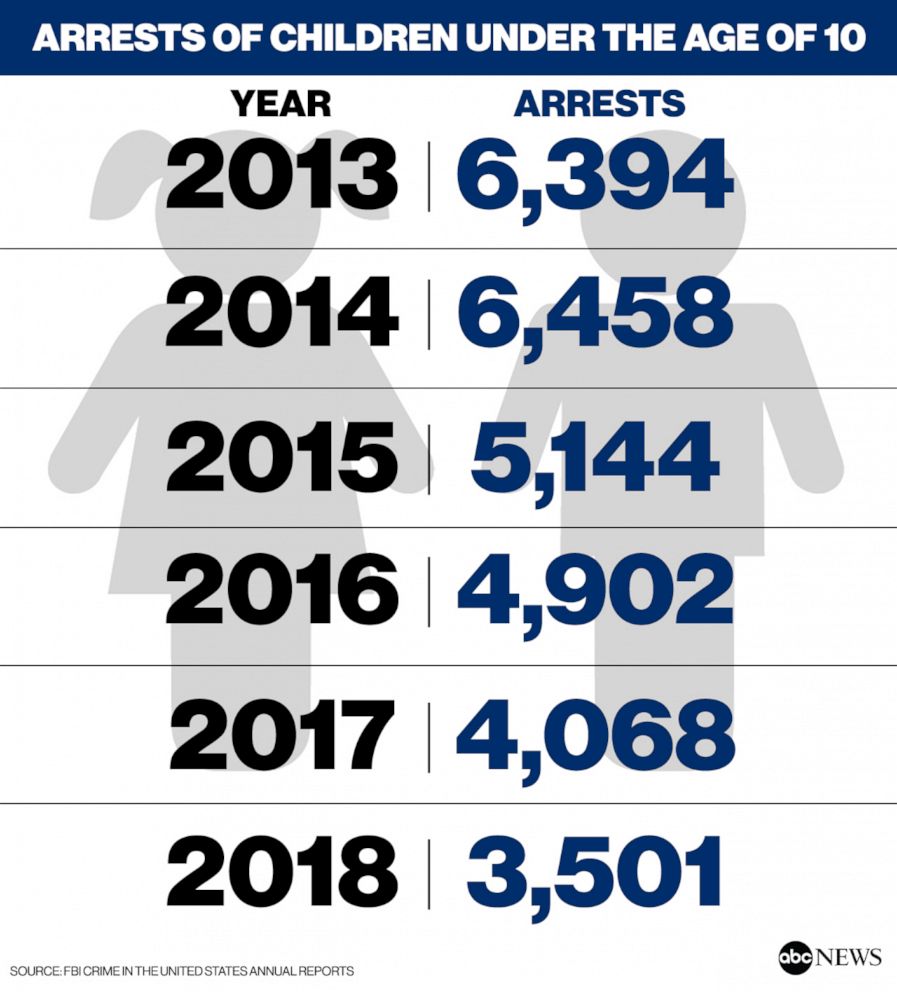
A tantrum leads to a 6-year-old's arrest
Meralyn Kirkland, the grandmother of one of the 6-year-olds arrested this month in Orlando by a school resource officer, told ABC affiliate station WFTV in Orlando that her granddaughter, who is black, was taken into custody on suspicion of battery when she allegedly had a meltdown at school and ended up kicking a staff member.
The girl was taken to the local Juvenile Assessment Center, but when Kirkland went to get her she says she was told the child was being fingerprinted.
"I think when they said fingerprinted is when it hit home to me," Kirkland told WFTV. "And I'm, like, fingerprinted? And they said yes, and they escorted me into an office and on the desk in that office were two mugshot pictures of my 6-year-old granddaughter."
Kirkland said that if the school resource officer took the time to inquire, he would have learned the girl is prone to temper tantrums because she suffers from sleep apnea.
Orlando Police Chief Orlando Rolon announced last week that the school resource officer had been fired for allegedly violating department policy by failing to get a supervisor's approval for arresting a child under the age of 12.
Details on the arrest of another 6-year-old last week by the same officer who arrested Kirkland's granddaughter were not disclosed by Rolon, who cited rules governing the privacy of minors.
"A top priority is to earn and protect the trust between the community and the officers," Rolon said at the press conference. "Because of this incident, the trust has been put in question. I apologize to the children involved and their families."
A dodgeball game, playing with food and refusing to go to the principal's office
Other such arrests of young children have made headlines as well:
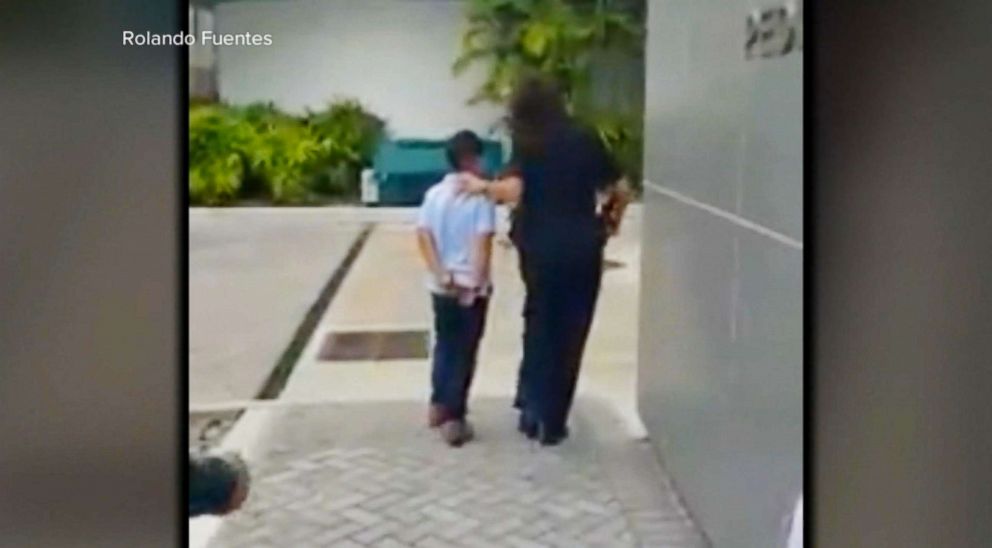
-- In July, a 10-year-old black boy was arrested on charges of aggravated assault after he threw a ball at another child's face during a dodgeball game on the playground of a suburban Detroit school, officials said. The charges were later dropped and prosecutors denied that race played a factor, as the boy's mom had charged.
-- In August, the U.S. Court of Appeals for the 8th Circuit ruled that a school resource officer in Kansas City, Missouri, who handcuffed a crying 7-year-old boy for refusing to go to the principal’s office and leaving him cuffed there, was “a reasonable course of action” and did not violate the child's constitutional rights. According to a lawsuit filed by the American Civil Liberties Union against the school district, the boy, who has a hearing impairment, broke down and began "hollering" after he was asked to move next to another student who teased him.
-- In January 2018, a 7-year-old boy was handcuffed at a Miami school and placed in a police car because, according to an incident report by Miami-Dade Schools Police Department, he misbehaved after a teacher told him "not to play with his food." The district said he "attacked" the teacher and continued to fight her even after she restrained him. According to the chief of the Miami-Dade Schools Police Department, cuffing a 7-year-old, while "rare," was "warranted to prevent his erratic and violent behavior from bringing further harm to others or himself."
-- In August 2018, a school resource officer in Denton, Texas, was captured on his body-camera video putting a 10-year-old boy with autism in handcuffs and holding him to the ground by the neck after he became obstreperous with a teacher when he was pulled out of a cubbyhole where he was hiding in the classroom, according to police and the child's parents. In a written summary by the Denton Independent School District, the boy was described as engaging in self-harming behaviors and that he engaged in "physically assaultive and unsafe behaviors. The Denton Police Department Office of Professional Standards initiated a review of the incident and no violations were found, a statement by the City of Denton said.
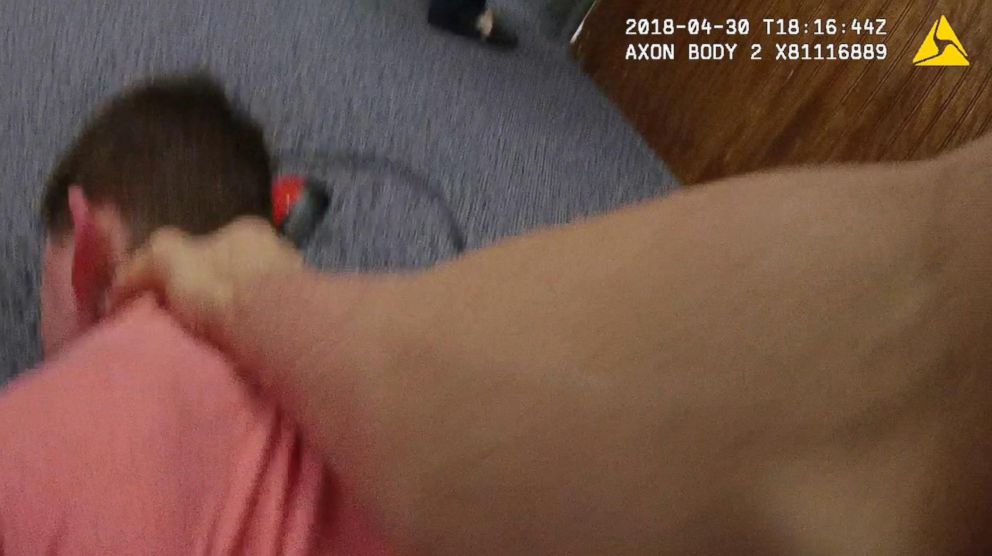
Beyond these headline-grabbing incidents, there were hundreds more arrests for serious offenses, according to the FBI data. In 2018, 155 children under the age of 10 were arrested for possessing weapons, 22 were arrested for rape, 11 for robbery, 56 for arson, and 289 for larceny and theft, including 15 for vehicle theft. Details of those cases were not immediately available.
It was not clear how many of those incidents occurred in schools and data surrounding arrests in schools is somewhat murky. According to the U.S. Department of Education Civil Rights Data Collection for 2015-'16, the most recent data available, over 290,600 cases in schools were referred to law enforcement or resulted in arrest. Black students were disproportionately subject to those disciplinary measures -- representing 15% of the student body and 31% of referrals, a 16% gap (up from 11% the year before). Students with disabilities were also disproportionately subject to that kind of discipline, according to the data.
In 2013-'14, the data was similar -- 260,000 students were referred to law enforcement and 92,000 were subjected to school-related arrests. In addition to contacts with law enforcement, the data shows that there were racial disparities in out-of-school suspensions as well, beginning in preschool, with black children -- or children of color -- disproportionately banned from school property.
Lack of training
Some experts said that police and school resource officer interventions with children so young was not surprising.
"None of this is shocking. It's predictable when you don't equip sworn police officers to deal with children and adolescents, who require a different approach," Thurau told ABC News. "You have to be developmentally appropriate, and trauma-informed, and racially equitable. We're not equipping officers to be that generally in the United States, much less when you place them in schools."
Thurau said recruits in police academies are generally given a total of four to six hours of training on how to deal with disciplinary encounters with children, in schools and on the streets. And a 2013 report from the Bureau of Justice Statistics said that 62% of police recruits were trained on interacting with youth.
Some school districts employ deputies from local police departments, while others, such as Miami-Dade County in Florida, employ an independent police force for their schools. Still, others employ school resource officers, defined in U.S. DOE reports as "career sworn law enforcement officers with arrest authority, who have specialized training and are assigned to work in collaboration with school organizations." According to the U.S. DOE, 42% of schools employed SROs in 2015-'16 and nearly 11% employed sworn law enforcement officers.
Some states have laws and regulations surrounding the certification or training of SROs, while others do not.
"Then you compound this with systems that don't put any attention to...in-service training for more experienced officers, and then you compound that with a lack of policies," Thurau said. "Most police departments have no policies for how to deal with these youth and so the default assumption is you treat them like mini-adults."
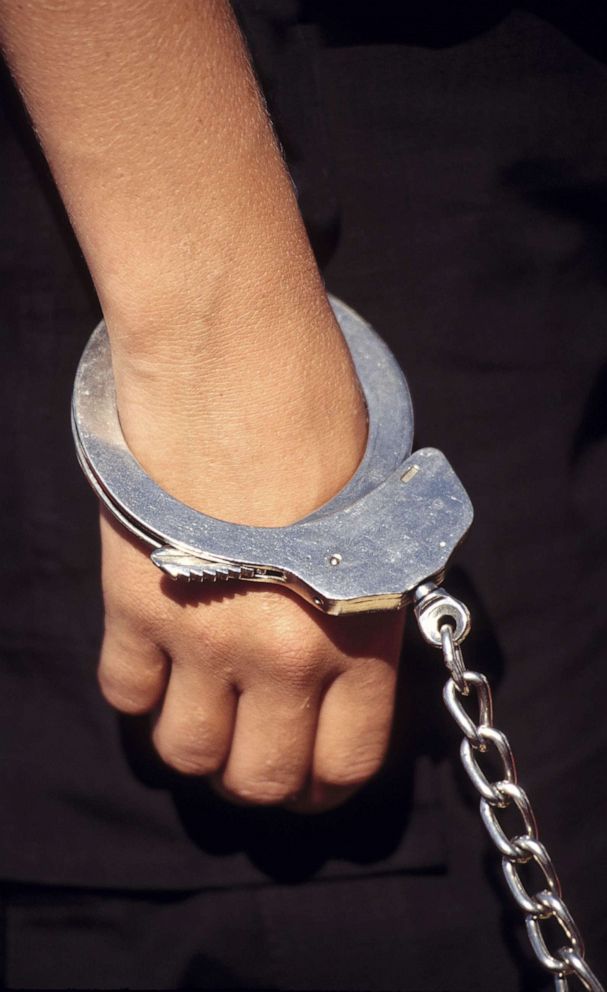
Mo Canady, executive director of the National Association of School Resource Officers, a nonprofit that trains about 10,000 school resource officers a year across the nation, said more than just training goes into a good SRO.
"There has to be a lot of sensitivity that takes place from an officer's standpoint working within a school," Canady told ABC News. "There are three things we're very clear that have to happen: One is that an officer that's going to work in that environment must be very carefully selected. You're talking about putting an adult from your law enforcement agency in a school environment, working with sometimes young children.
"So you've got to make sure that the moral character is right, that they are veterans, that we have a good track record on them, that they really want to work with youth and they've shown that they do that through volunteer opportunities and those kinds of things," he added.
He said the training his organization does with officers, who are oftentimes mandated by state or local jurisdictions to take the course, includes dealing with special needs students and understanding adolescent brain development.
"We want officers to understand the science behind that. What's going on with kids at different phases of their lives and how much brain development impacts that," Canady said. "When we understand that and officers are well educated on that, then they're better able to de-escalate situations. So that's a critically important piece."
Canady, a retired Alabama police officer who spent half of his 25-year law enforcement career as a school resource officer, said officers are also trained to refrain from getting involved in instances that are clearly disciplinary matters that can be handled by school officials.
"The number one goal we teach to SROs that come to our training is that the most important thing they're going to do is build relationships with students," Canady said. "Bridging the gap between law enforcement and youth is critically important and when they do that and they do it the right way they also find themselves with some valuable intelligence at times that has helped us stop acts of violence before they ever occur."
Karol Mason, president of John Jay College of Criminal Justice in New York, told ABC News that many programs have been developed in recent years to stem the numbers of arrests of children and give police and schools the tools needed to address the issue.
When she was a former assistant attorney general in charge of the Office of Justice Programs in the Obama administration, Mason was part of a task force that presented a report called "My Brother's Keeper" to President Barack Obama in 2014, which included guidance on how schools and police should handle disciplining young children.
"Even relatively simple actions, such as removing suspension as a consequence for low-level offenses, can have a significant impact on suspension rates," the report said, noting that contacts with the criminal justice system can have devastating and lasting impacts on youth and disproportionately affect minorities.
An update two years later noted successes from the program. In Philadelphia, for instance, the Police School Diversion Program prevented children over 10 involved in low-level offenses from being arrested and logged a 54% decline in school-based arrests, the administration said in its report. Students who are diverted and their families are provided with other resources, including food and housing assistance and tutoring.
"It talked about how are we supporting the success of our children of color, particularly our young men and boys of color. And one of the issues that President Obama always talked about was that we don't give children the freedom to be children and to make mistakes and grow up," Mason said.
Racial disparity
In July, the U.S. Commission on Civil Rights released the report "Beyond Suspensions: Examining School Discipline Policies and Connections to the School-to-Prison Pipeline for Students of Color with Disabilities" that analyzed more than 2.7 million student suspensions handed out at U.S. public schools in the 2015-'16 academic year. The study found that students with disabilities are at higher risk of being suspended than their peers, and black students with disabilities lost approximately 77 more days of school due to exclusionary discipline than their white peers.
The commission's report also showed that 1.6 million students attend a school with a sworn law enforcement officer but not a school counselor. The report found that in the 2015-'16 academic year, schools reported having more than 27,000 school resource officers, compared to 23,000 social workers.
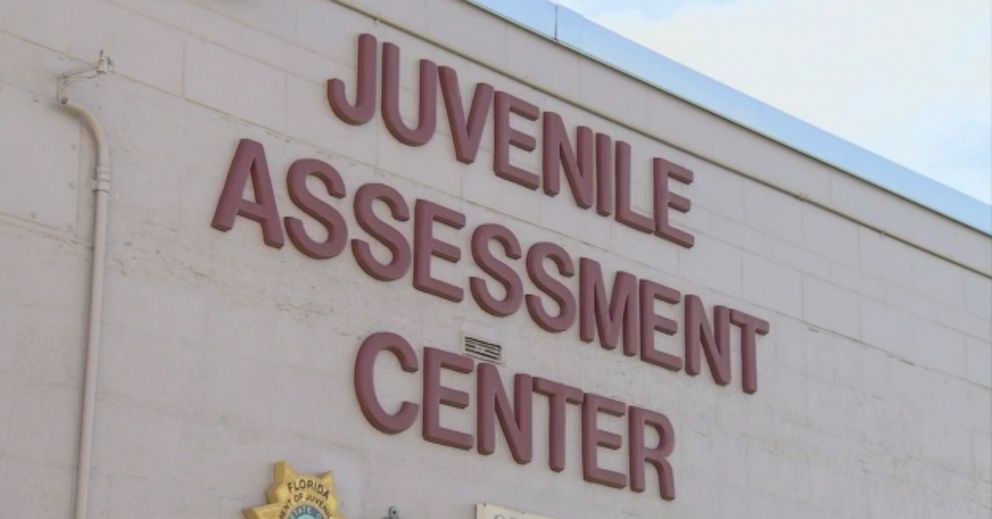
"Students of color as a whole, as well as by individual racial group, do not commit more disciplinable offenses than their white peers -- but black students, Latino students, and Native American students in the aggregate receive substantially more school discipline than their white peers and receive harsher and longer punishments than their white peers receive for like offenses," Catherine E. Lhamon, the chair of the commission, wrote in a letter addressed to President Donald Trump and Vice President Mike Pence.
The commission made a series of recommendations, including providing teachers with resources, guidance, training, and support to ensure nondiscriminatory discipline in schools and that Congress should provide funding incentives to states to ensure all schools have adequate counselors and social workers.
"It's not a criminal justice issue, it's a discipline issue and the schools need to think of it that way and not create a pathway for them (young students) into the criminal justice system. Because once they have that on their records and you start treating them a certain way and perceiving them a certain way, there is an unfortunate trajectory," Mason told ABC News.
Mason said some school districts, including one in Charles County, Maryland, have created teams that monitor the behavior of students to figure out what resources they need to make the child successful and avoid disciplinary problems.
"There are a lot of studies that talk about the effect of trauma on child development and arresting a 7-year-old, putting them in handcuffs and taking them out of school, that's trauma and trauma disrupts normal development," Mason said. "Is this child going to definitely wind up in the criminal justice system? No. But are you increasing the likelihood that it could happen because of this? Yes."
This report was featured in the Monday, Sept. 30. 2019, episode of ABC News' daily news podcast, "Start Here."




